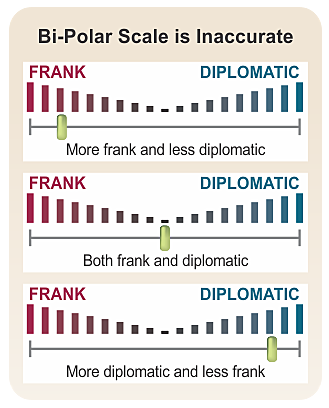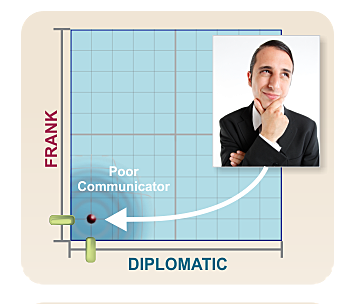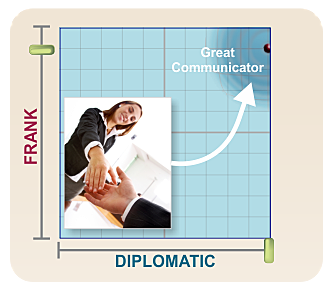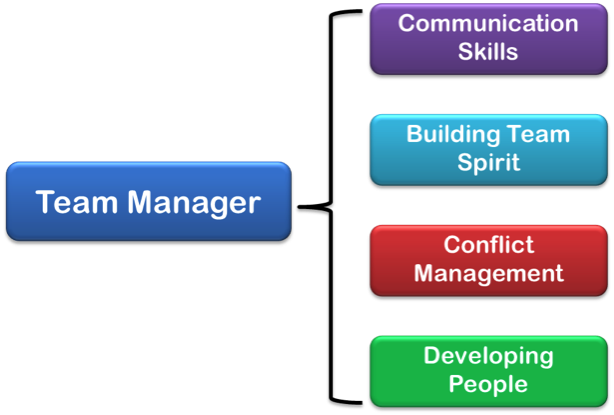As leaders, we all have those moments where we get knocked down. These moments are embarrassing and humiliating. Depending on how you react to them, these moments can strengthen and evolve your leadership. Listen to Jinnie and my conversation with Bill Treasurer, author of “A Leadership Kick in the Ass”. You can learn how to not let those “kicks” deflate you.
 Many of my clients are at the start of their company’s annual performance review process. While managers and employees understand the importance, the process still strikes fear and loathing in their hearts. Many managers dread doing performance reviews, believing that they’re time-consuming, administrative exercises in futility forced on them by Human Resources (HR). A high percentage of employees think appraisals are stress-inducing and pointless at best; at worst, the reviews are tools that make them feel unimportant and unappreciated, which causes them to feeling demotivated and leads to a lack of employee engagement. While employees are grateful to be getting feedback, it isn’t productive or effective if this is the only time they get it.
Many of my clients are at the start of their company’s annual performance review process. While managers and employees understand the importance, the process still strikes fear and loathing in their hearts. Many managers dread doing performance reviews, believing that they’re time-consuming, administrative exercises in futility forced on them by Human Resources (HR). A high percentage of employees think appraisals are stress-inducing and pointless at best; at worst, the reviews are tools that make them feel unimportant and unappreciated, which causes them to feeling demotivated and leads to a lack of employee engagement. While employees are grateful to be getting feedback, it isn’t productive or effective if this is the only time they get it.
We’ve seen a trend away from annual performance reviews in the past few years. In her article back in October 2012, “Is it time to give up on performance appraisals?”, Gabriella Jozwiak stated that a US poll of 2,677 people (one-quarter of whom were HR professionals) by rewards-and-recognition consulting firm Achievers “revealed 90% of staff find annual performance reviews unnecessary.”
Research indicates several common shortcomings to annual performance reviews because they:
- Take up a lot of time. Traditional performance reviews can take hundreds of hours for managers, depending on the number of direct reports, and 40 or more for each employee, as well.
- Reflect the most recent time period. Everyone has days or even weeks when they’re not on their “A” game. Annual performance reviews don’t always give an accurate picture of an employee’s consistent overall contributions. For one thing, they often rely on a busy manager’s memory, which naturally defaults to the most recent period. Suppose an employee had a family problem in the last few months before the review. Does that negate the outstanding work they did for the nine months prior to the problem?
- Happen too late to adjust performance or behavioral issues. If one of the goals of an annual performance review is to motivate employees to improve performance, it’s of little use to wait for the review date to address an issue. Giving an employee feedback at the time it could make a positive difference makes more sense.
But many companies still require the annual performance review. So what can you do to make the reviews more relevant and meaningful?
- Coach, don’t review. During the annual performance review, book monthly or quarterly one-on-one sessions during which you and your employees set goals, monitor performance, and discuss what successful outcomes look like. Traditional reviews can leave employees feeling judged, like their manager is storing up mistakes to bring up as “Gotchas!” Coaching encourages strong performance and supports team members during weak performance. It makes employees feel like their manager is on their side and they’re working together for a common goal.
- Use notes from each meeting to complete the annual performance review. Keeping a few short notes from monthly meetings will give a more balanced view of an employee’s overall contributions, not just focus on the last couple of months or the “peaks and valleys” of their performance.
- Give praise and credit where it is due. When many perks and benefits have been reduced as a cost-saving measure, reviews are more important than ever to make sure high-performing employees feel recognized and appreciated. If you miss an opportunity to praise an exceptional employee, you may lose them to the competition.
- Address any issues. The best time to deal with inappropriate behavior or lack of performance is when it happens. Frequent meetings lend themselves to addressing the issues and following up to make sure they are being corrected before they escalate into bigger problems.
- Close on a positive note. Make sure that you and your employee are on the same page about performance, goals and objectives, and their development plan. Employees should leave the meeting feeling that you believe in them and will help them achieve success.
Feedback and coaching on an ongoing basis can help managers take small strides toward improving performance while relieving some of the stress of the anxiety-provoking annual review. What tips do you have the make the annual performance review easier? I would love to hear your ideas.
 Every professional role requires certain behavioral traits in employees for success. The job success traits required depend upon the position. For an employee to be successful in the role, they must possess the traits that create job success and fit into the company culture. Most employers try to determine whether a potential new hire has the necessary traits through interviewing . To assess the traits, you need an assessment system that reveals savvy insight into human behavior.
Every professional role requires certain behavioral traits in employees for success. The job success traits required depend upon the position. For an employee to be successful in the role, they must possess the traits that create job success and fit into the company culture. Most employers try to determine whether a potential new hire has the necessary traits through interviewing . To assess the traits, you need an assessment system that reveals savvy insight into human behavior.
The Bipolar Method
The problem with most assessments is that they rely on a traditional “bipolar” measurement approach. The bipolar approach assumes an either/or relationship between two opposing traits, such as whether a candidate is Diplomatic or Frank. When you place Diplomatic and Frank on opposite ends of the same scale, the bipolar approach assumes that the more Diplomatic you are, the less Frank you are, and vice versa. This assumption isn’t necessarily correct. You can be both Frank and Diplomatic, or neither.
The bipolar method of most assessments tries to overcome potential cheating by forcing people to choose between two complementary positive traits. This could give the false results that the candidate appears to be in the middle.
For example, I have a client that is hiring a Marketing Manager. She needs to hire someone who is a good communicator. She has two candidates: Doug and Cheryl. When measured on a bipolar scale, both appear to be in the middle, which incorrectly indicates that they are balanced in communication. This indicates they are both potentially good candidates for job success.
The Paradox Approach
Harrison Assessments (HA) takes a different approach. HA measures each of the complementary traits independently. When  measured on HA’s paradox scale, a different picture emerges. It is clear that Doug lacks both Frankness and Diplomacy, and is a poor communicator.
measured on HA’s paradox scale, a different picture emerges. It is clear that Doug lacks both Frankness and Diplomacy, and is a poor communicator.
On the other hand, it shows that Cheryl is both Frank and Diplomatic, and is an excellent communicator. The traditional bipolar approach only provides a superficial and often inaccurate view of communication style. It fails to identify the behavioral issues that are critical to job success. HA’s Paradox Technology™ provides this vital missing piece and  prevents deception. It’s extremely effective at identifying negative traits because it’s based on the principle that each trait has the potential to be either production or counter-productive, depending on other balancing traits.
prevents deception. It’s extremely effective at identifying negative traits because it’s based on the principle that each trait has the potential to be either production or counter-productive, depending on other balancing traits.
For example, you might consider Frankness to be a positive trait. However, if it’s not combined with Diplomacy, it actually becomes Bluntness, which can be counter-productive. We’ve all known someone who says things in an abrasive or outright offensive manner. What they say may be helpful, but people can’t get past the way it was said to actually put it to good use. This could be a serious block to job success.
On the other hand, Diplomacy is usually considered a positive trait, too. But without Frankness, it can become evasive, which is counter-productive. Paradox Technology™ analyzes and determines a broad spectrum of potential counter-productive traits. This is important because negative traits usually account for 60-75% of the factors that determine job success.
Have you ever interviewed someone who seemed perfect for a position, but turned out to be a disappointment once hired? Do you think a better assessment tool would have helped prevent it?
 Competency-based talent acquisition and management is widely used. Although there are many variations on the theme, it’s generally agreed that competencies are a combination of knowledge, skills, attributes, and motives that result in excellent performance. Human Resources (HR) professionals frequently use competency-based development for talent management.
Competency-based talent acquisition and management is widely used. Although there are many variations on the theme, it’s generally agreed that competencies are a combination of knowledge, skills, attributes, and motives that result in excellent performance. Human Resources (HR) professionals frequently use competency-based development for talent management.
HR generally creates job competency profiles for roles within the organization. They identify the competencies necessary for someone to be successful in a role. For example, a successful Team Manager would need to be highly proficient in the competencies shown here:

The competencies chosen depend on several factors, often based on those demonstrated by an excellent performer already in the role.
Pros and Cons
Key advantages to competency-based employee recruitment and management include the following:
- Results-oriented: They make it easier to concentrate on the results expected of a successful performer. They focus less on items like educational level or years of experience that have little connection to verifiable results.
- Performance management cycle: Only about half of employees in a Gallup study strongly agreed that they know what’s expected of them at work. Competencies help managers identify strengths and weaknesses, and give them a platform for coaching and feedback.
- Succession planning: Competencies give employees a clear view of what’s necessary to be considered for management. Employees wanting to move into management can tailor their professional development to meet the competencies of the role they want.
There are no perfect solutions, however. The challenges that competency-based talent management presents include these considerations:
- Time and other resources: Competency-based processes require disciplined and regulated job and work analyses. HR professionals must verify and validate the outcomes of the analyses and ensure accuracy. Many organizations are unwilling or unable to invest the time and resources required.
- Not appropriate for all job levels: Competency-based approaches are not appropriate for recruiting and choosing unskilled or semi-skilled workers. Individual discretion is a major competency factor in professional and managerial positions. It’s not a key issue in less skilled roles.
The Missing Piece
While a potential new hire or employee may exhibit competencies that indicate they’re right for a role, there’s another side to consider. Negative traits can account for 60-75% of factors that determine job success. What counter-productive tendencies do they possess that could derail their job success? How do you find out?
Trait-Based Talent Management
You need an assessment tool that measures behavioral factors that could be damaging to job success. Harrison Assessments (HA) uses Paradox Technology™ to determine whether a person’s behavioral tendencies are strengths or derailers in a given role.
A robust assessment tool such as HA can be used to define the traits required to be successful in a role, match people to the right roles, accelerate development, and help managers coach and engage employees. Advantages to this trait-based tool include the following:
- Saves time and money: The SmartQuestionnaire™ measures a full spectrum of workplace-relevant issues in only 25 minutes. HA maps employee talents to specific job requirements. It ensures business objectives are aligned with employee goals, passions, and expectations. This increases employee retention.
- Increases employee engagement: The Enjoyment Performance Methodology recognizes the importance of what employees want and need. The results are motivated, engaged employees.
- Appropriate for most job levels: HA determines what traits a person needs to be successful in a role. It also provides a platform for employee coaching and development. Employees who see a future are more likely to stay with an organization, increasing the return on investment for employee development.
What method of talent management does your company use? Do you think a trait-based method would be more helpful?
 Most managers realize training is essential for a team to be effective and successful. Just because your team is made up of talented individuals is no guarantee of success. Team performance is as critical as individual talent.
Most managers realize training is essential for a team to be effective and successful. Just because your team is made up of talented individuals is no guarantee of success. Team performance is as critical as individual talent.
For the best results, you have to understand team members’ individual needs, as well as the overall team dynamics. Some training needs will apply to many or all of your team; some won’t. So how do you avoid wasting time and money on unnecessary training?
Does One Size Fit All?
Everyone on your team is unique. They all have different skills, levels of understanding, responsibilities, and perspectives. So your training should NOT follow a “one size fits all” approach. Instead, take the time to understand the training that each individual needs. Then you can provide the right training for the right people. This improves performance and saves time, resources, and money. Plus, you’ll earn dividends because employees will feel valued and that you are concerned about their professional development needs, which increases engagement.
Five Steps to Success
Follow these steps to better understand your team’s training needs.
- Review job descriptions.
What work should your team members be doing? What are their responsibilities and objectives? You can find this information in the job description for each position. Identify the skills they need to do a good job.
Tip: Sometimes job descriptions fall out of date. Be sure they’re current and line up with what the team members actually do.
2. Meet with team members.
Have a one-on-one meeting with each member of your team. Find out what kind of training and development they think they need to work effectively.
They might not think they need any training. You’ll have to use good questioning techniques and active listening skills to communicate with sensitivity and respect. Here are some sample questions to get you started:
- What are some challenges you face daily?
- What do you find most frustrating about your job?
- What areas of your job, or the company, do you wish you knew more about?
- What skills would help you be more productive and effective?
Then ask them what outcomes they’d like to achieve. Discuss how these goals align with the team’s objective(s).
3. Observe team members at work.
See how team members do with key tasks. If they could be quicker or if they’re procrastinating on projects, they might not be confident in their skills. This gives you a clue about what additional training they may need.
4. See how team members interact with others.
If team members don’t communicate well and cooperate, team performance suffers. Conflict between team members can undermine the team’s success.
5. Determine action steps.
Once you have an idea of the training and development each team member needs, as well as the overall team training needed, decide how you’ll make it happen. There are many options available, such as on-the-job training, instructor-led training, and technology-based training such as e-learning and video training. Make sure you choose a method or methods that will give you the best return on your investment.
Who Has Time For All That?
If you don’t have the time or inclination to work through these steps, there are assessment tools available to help with team development. Be selective; you want a tool that will help you build stronger teams and optimize team performance.
Look for an assessment that does the following:
- Creates effective interactions to enhance team performance
- Reveals the strengths and challenges of a team including team decision-making potential
- Identifies the best roles for team members
- Assesses the potential for cooperation or conflict
- Establishes clear guidelines for effective interactions
- Reveals blind spots that may undermine performance
- Facilitates team self-discovery to accelerate the team performance process
If you’d like to find out how Harrison Assessments can help you build successful teams, contact me at laurie@theperformancedifference.com.
What’s your greatest team-building challenge? Tell me in the comments section.
Recent Podcasts
- 24 May 2017The Case of the Overly Optimistic Entrepreneur
- 17 May 2017The Case of the Overbearing Boss
- 09 May 2017The Case of the Overly-Empathetic HR Director
- 04 May 2017The Case of the Fearful Strategist
Contact Details
- 3463 Chastain Glen Lane
Marietta, GA 30066 - 678-761-3550
- info@theperformancedifference.com
- Contact Form
Recent Posts
Recent Podcasts
- 10 Mar 2014Organizational Creativity
- 24 Feb 2014Interactive Learning Platforms
- 24 Feb 2014Civility in the Workplace
- 24 Feb 2014The Essence of Leadership
Contact Details
- 3463 Chastain Glen Lane
Marietta, GA 30066 - 678-761-3550
- info@theperformancedifference.com
- Contact Form

